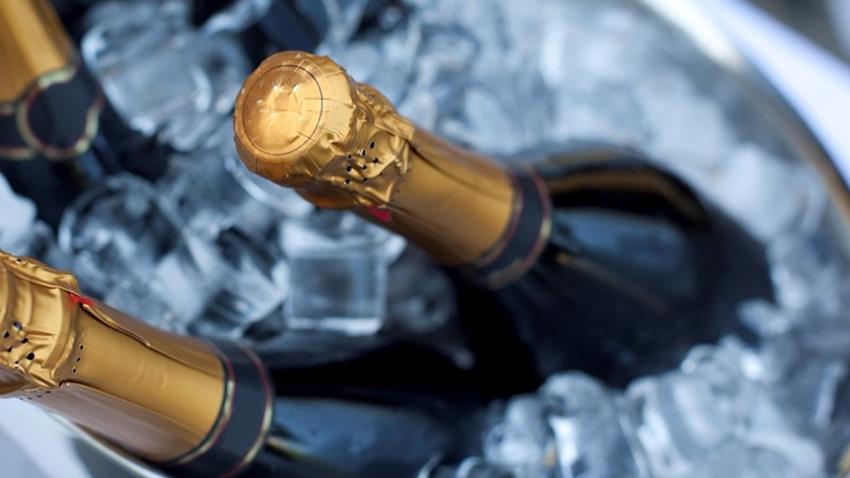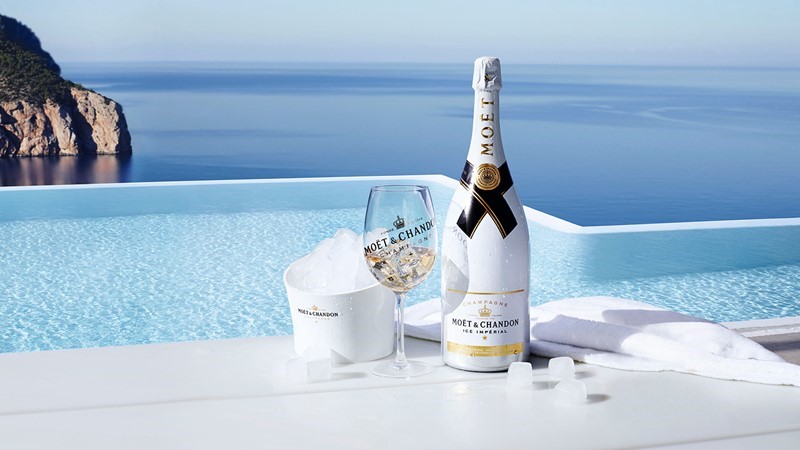
As you may recall, last summer witnessed the launch of a number of wines made specifically to be served over ice. Moet Ice, Veuve Clicquot Rich and Freixenet Ice Cava were all added to our range. Sparkling wine over ice was the big summer trend but some people needed some convincing. “Watering down Champagne with ice, are you mad?”
Perhaps. Perhaps not. Last summer wasn’t the birth of serving sparkling with ice. The roots of the serve go back to the affluent beach side resort of St. Tropez, an area more associated with high-end fashion than poor wine etiquette. “La Piscine”, those of you who did a bit of French at school will recognise, translates to ‘the swimming pool’, and its a popular serve in this corner of France. It’s the practice of dropping some ice into your glass Champagne to keep you and your drink cool poolside.
The next natural step for Champagne producers was to begin to produce wines specifically for the purpose as the trend began to spread. The problem for winemakers is of course that adding ice to Champagne does dilute the precious flavours that take literally years to create as the ice begins to melt. Champagne is typically made from three grapes: Pinot Noir, Pinot Meunier and Chardonnay. With these specifically ‘over ice’ made wines the proportion of red grapes is subsequently dialled up to give the Champagne a fruitier and fleshy flavour.

The second issue is that temperature dulls the effects of the wines residual sugar making it seems far drier. To counter balance this the winemakers are adding far higher dosage into the bottle. As much as 60g per litre of sugar against a typical 9g. Both of these changes will, of course, make that first sip intense and packed with fruit. As the ice begins to cool the liquid and melt, you’ll receive a far more balanced flavour.
The rich flavour of these wines not only make them perfect to be served over ice, they also work well served within cocktails or garnished with fruits, mint or even tea! The flavours are strong enough to stand up and take the spotlight when mixed, actually making the serves very versatile and open to personalisation. Thankfully, for us more akin to a British summer than one in St Tropez we are still able to find an excuse to pop a bottle.
Despite all the noise around these wines last summer, this year I haven’t heard as much. Could it be that we’re simply not prepared for the sight of ice falling into a glass of Champagne? Perhaps we’ve just not had enough sunny days to bring it to mind? It does beg the question, is Champagne over ice here to stay?
There is no easy answer on the subject. A key selling point with this new wave of wine is the appeal of the serve to younger consumers. Its premium, its Instagram-able and you can tailor the drink to exactly how you like it. It is argued in some circles that the tradition of Champagne (and cava) may not be as strong a selling point to the upcoming generation of consumers, so surely here lies the solution? Served in wider rimmed glasses, garnished with fruits and enjoyed on the sunny terrace, tradition is certainly not at play here. Unfortunately, we will just have to wait and see what the future holds for champagne and ice, but with the might of Champagnes biggest houses behind it, I’m sure we will continue to see it for a little while yet.
Interested in finding out more? Get in touch with your account manager about we can help develop your wine range or click here to arrange a meeting with one of our team.

